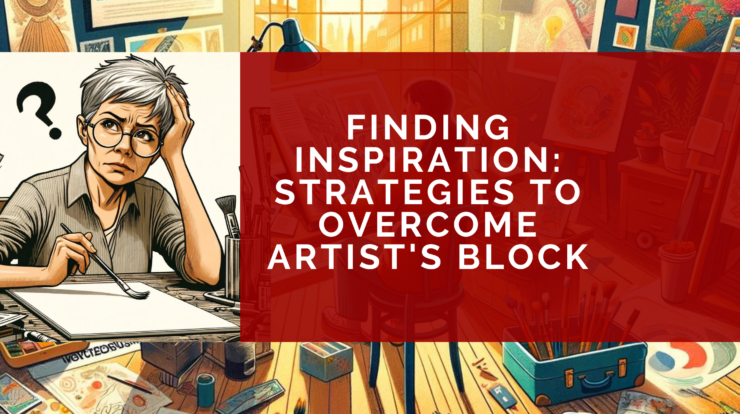
Every artist encounters times when inspiration seems elusive and the creative well runs dry. It’s a common challenge, but there are various effective strategies to reignite that creative spark. In a recent Art Business Academy session, members shared a variety of ideas on how to overcome artist’s block. Here are some tried-and-true methods to help you get back to creating with enthusiasm.
Revisit Old Work
One of the simplest yet most effective ways to kickstart inspiration is to revisit old work or images. Cruise through your previous photographs or sketches. This exercise can remind you of past ideas and projects that still have potential. Often, just seeing a familiar piece from a new perspective can spark fresh ideas.
Engage in Playful Exercises
Another approach is to keep moving by engaging in loose, playful exercises. Let go of the pressure to create a masterpiece and simply enjoy the act of painting or drawing. Resurrecting a previously painted subject can also be a great way to ease back into your creative flow without starting from scratch.
Experiment with New Mediums
Experimenting with new mediums is another fantastic way to break through a creative block. Trying out a material or technique you’ve never used before can open up new possibilities and reignite your passion for creating. Don’t be afraid to embrace a childlike level of creativity and playfulness during this exploration.
Visit Museums or Galleries
Visiting a museum or gallery can also provide a much-needed dose of inspiration. Walking through exhibits and observing the work of other artists can stimulate your own creative juices. It’s a chance to see different styles, techniques, and subjects, which can inspire new directions in your own work.
Take a Break
Sometimes, the best way to overcome artist’s block is to take a complete break. Engage in a different physical activity like hiking, cycling, or yoga. This can help clear your mind and refresh your perspective. Similarly, putting a piece of art away out of sight for a while and coming back to it later can help you see it with new eyes and renewed energy.
Declutter and Reorganize
Decluttering and reorganizing your workspace or even your life can also have a positive impact on your creativity. The very act of organizing can get your creative juices flowing. A fresh, organized environment provides a clear mind and a new start, making it easier to focus on your art.
Take a Vacation
Finally, taking a vacation or a short trip can work wonders for resetting your creative mindset. A change of scenery and routine can provide new experiences and perspectives, helping you come at your work from a fresh angle upon your return.
How Have You Overcome Artist’s Block?
I’d love to hear about your experiences with overcoming artist’s block or any questions you might have. Please share them in the comments below.
All of these are great suggestions that I have used from time to time, one other tactic I would add is “paint like you just don’t care”, it is a mindset to free yourself from feeling like you have to produce something for someone…ie gallery, clients, etc. Some of my best work was created with a mindset of “I don’t care, it’s just paint!”
I rarely get artist block, what I get is bored. I work in two different styles to keep myself fresh. My Native American work is completely different than my equine work.. Both have movement because to me, stillness in life is boring and life is about movement and motion. When I get tired of one genre and put it aside and work on the other. Discipline also plays a big role in making sure I paint every day. Having an underlying illness makes you want to do the best you can on the time you’re able to paint
Working with metal, both in my hanging art and sculpture, I often start with one piece that I feel has potential as the main piece of my work, either from past works, a book, or daydreaming. I often have no idea how it will be part of or incorporated into the art. Sometimes, I end up not using it at all, but it got me started. Now that I write it out it sounds strange. I think the process for me is ineffable. But I am leaning towards the ‘daydreaming’ thing.